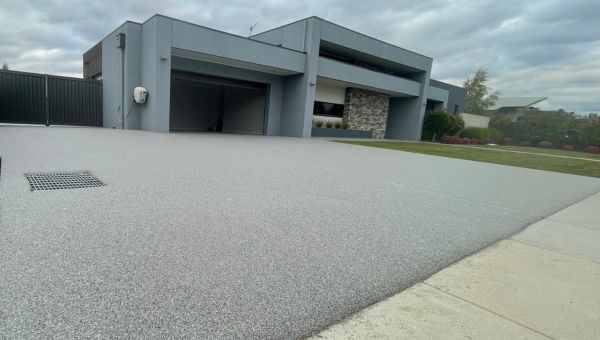Innovative solutions across multiple sectors are being created to increase sustainability. To combat modern environmental concerns, we are becoming more aware of how impermeable surfaces such as parking lots contribute to water pollution; permeable parking lot technology offers an effective solution.
Understanding Permeable Parking Lots:
The design of permeable parking areas represents an innovative shift in urban infrastructure. Permeable lots permit water infiltration unlike traditional concrete or asphalt lots which repel it, helping reduce runoff pollution. This post explores permeable lots' definition, function, and various types.
Definition: A permeable lot or porous parking lot can be defined as any surface that allows liquids to seep through and absorb into the soil underneath rather than being dumped onto traditional pavement surfaces, providing for effective water management and sustainability.
What Is A Permeable Parking Lot? A permeable parking lot's functionality depends on both its design and material composition. These lots typically consist of structures or surfaces with pores to allow water to pass easily - permeable asphalt, porous concrete and pervious pavers are examples of such surfaces - while an aggregate base layer may also be added underneath to store and disperse infiltrated water effectively to minimize soil erosion or flooding.
Permeable parking lot types:
Permeable pavers are concrete or stone units equipped with holes or spaces between pieces that enable water to percolate through and reach layers beneath, decreasing runoff. Pervious concrete allows water to pass freely through it as well, further decreasing runoff.
Porous Asphalt: Porous asphalt offers an economical, long-term solution for parking lots featuring permeable surfaces; providing protection while still permitting water infiltration through its pores. Similar in structure to conventional asphalt but featuring channels to allow this water infiltration.
Permeable parking lots provide cities and communities with an effective solution for water issues in urban environments while increasing sustainability. Here we explore their environmental and economic advantages before discussing possible implementation challenges.
Environmental Benefits of Permeable Parking Lots -
Reduced Stormwater Runoff - Permeable lots play an invaluable role in mitigating urban runoff on water bodies. While conventional surfaces produce significant runoff when it rains, permeable lots allow water to soak through into the soil instead, significantly reducing runoff amount and speed and relieving pressure off stormwater systems; they may even help lower flood risks by replenishing local aquifers by holding onto moisture within these lots, relieving pressure off drainage infrastructure infrastructures overall.
Permeable Parking Lots Promote Groundwater Recharge. One of the primary advantages of permeable parking lots lies in their capacity to encourage groundwater recharge by channeling rainwater through soil layers and percolation into subsurface layers, naturally replenishing groundwater supplies that provide ecosystem resilience and sustainment. Furthermore, permeable areas help combat soil erosion through encouraging infiltration while decreasing runoff volumes and rates, thus naturally replenishing their supply.
Pollution control: Permeable parking lots act as filters that capture pollutants that would otherwise enter waterbodies through storm drainage systems, including heavy metals and sediments that accumulate on porous surfaces or subsurface layers; rainwater enters these pores, which capture contaminants like heavy metals or sediments before removal through various processes (adsorption/microbial decomposition/filtration etc) that help safeguard aquatic ecosystems and help keep rivers, lakes and streams clean for future generations of wildlife! By decreasing pollution of rivers lakes streams helps preserve them for future generations of wildlife!
Benefits to the Economy I. Parking lots featuring permeable surfaces offer long-term cost savings in both maintenance and stormwater management costs. Permeable surfaces typically require reduced levels of maintenance than traditional impervious surfaces like asphalt, including cleaning and repairs that don't need to happen as frequently, surface degradation problems tending to decrease more efficiently, plus water seeping through seeping into soil rather than being forced over expensive upgrades and expansions of stormwater infrastructures reducing surface degradation problems faster and lowering surface degradation costs more efficiently resulting in long term financial and environmental savings both financially and environmentally for property owners as well as municipalities alike! Overall permeable lots lead to long term financial and environmental savings both financially as well as environmental savings both financially as well as environmentally for property owners as well as municipalities!
Studies demonstrate the value of properties with permeable lots is on the rise, thanks to homebuyers, investors and tenants prioritizing environmental resilience and stewardship. Homeowners with permeable surfaces like permeable parking areas often attract homebuyers looking for environmental stewardship features like LEED points or stormwater credits which add even further value to these lots. By investing in permeable lots to increase environmental performance and increase returns on their investments.
Implementation Methodology and its Challenges.
Design Considerations: There are various key considerations when developing permeable lots. Suitability of site for permeable surface implementation must always take precedence due to variations in soil condition or slope; not all locations suit permeable surfaces due to proximity of groundwater sources, drainage requirements for stormwater management purposes flooding prevention/erosions issues, etc. Drainage needs must also be assessed carefully to provide safety measures against flooding/erosion problems or flooding, with routine cleaning surface debris removal as well as replacing and repairing permeable material as essential components.
Regulation and Permitting Challenges: Implementation of permeable parking areas can be hindered by restrictive zoning or building codes that do not encourage sustainable designs, necessitating updates to zoning laws and building codes to promote permeable surfaces like permeable surfaces such as permeable surfaces. Installation and maintenance guidelines could be included through updated building codes as part of these update programs; permits can also present hurdles due to bureaucratic processes as well as concerns for property rights, safety, or the environment that prevent permit approval despite projects receiving funding; these challenges need updates as soon as possible to support permeable projects successfully implemented;
Education and Awareness: Education and awareness campaigns should be conducted effectively to encourage the adoption and maintenance of permeable parking lots, including their advantages. Property owners, engineers, municipal officials, and developers all require information on both the benefits and maintenance requirements associated with permeable surfaces. Workshops, outreach programs, and demonstrations are an effective way of raising community awareness as well as building capacity to adopt sustainable design solutions more easily. Stakeholders can overcome any hurdles to fully take advantage of permeable lots while increasing both social and environmental benefits through cultivating cultures that foster collaboration and stewardship by all involved.
Case Studies and Success Stories.
Permeable parking lots serve as an exemplar of sustainable urban planning in action. Around the globe, permeable surfaces have been implemented into projects from residential developments to commercial property and public space; their use reduces stormwater runoff while improving water quality; case studies demonstrate their feasibility while showing environmental and economic advantages realized from successful implementations; communities can speed adoption by sharing lessons learned from previous successful implementations;
Conclusion:
Conventional impermeable surfaces pose environmental, social, and economic challenges for which permeable parking areas provide solutions. Permeable parking areas create sustainable urban environments by decreasing stormwater runoff, and increasing groundwater recharge rates while controlling pollution levels - as well as offering long-term cost-savings, increased property values, and enhanced resilience benefits over their predecessors. Businesses, municipalities, and property owners need to adopt permeable parking lot technology as part of their sustainability initiatives so we can build greener cities together - and together build our sustainable future!




